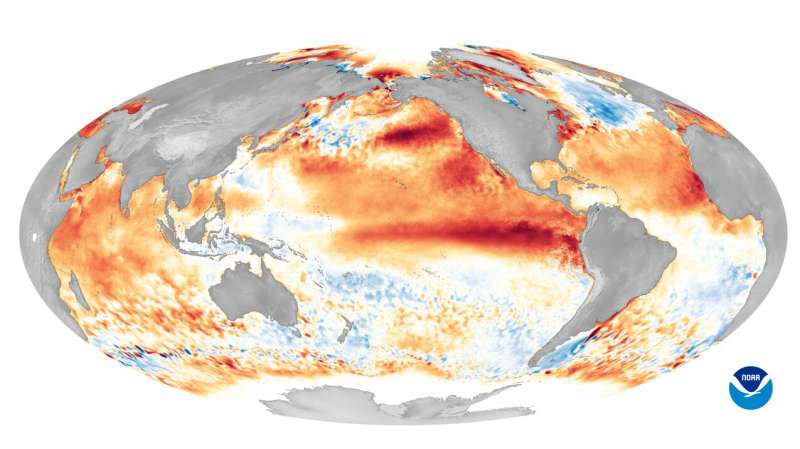This article has been reviewed according to Science X's editorial process and policies. Editors have highlighted the following attributes while ensuring the content's credibility:
fact-checked
trusted source
proofread
El Niño likely to develop this summer, says scientists

NOAA's Climate Prediction Center has issued an El Niño Watch this morning as part of its April ENSO outlook.
A watch is issued when conditions are favorable for the development of El Niño within the next six months. While we are still in an ENSO-neutral phase—when no El Niño or La Nina is present—there is a 62% chance El Niño will develop sometime between May and July. This comes after nearly two continuous years of a La Nina.
El Niño: What it is and why it matters
The El Niño-Southern Oscillation (or ENSO) is a climate pattern defined by sea surface temperature and precipitation departures from normal across the equatorial Pacific Ocean that can influence weather and climate patterns across the U.S. and around the world.
El Niño is the warm phase of ENSO when ocean temperatures are warmer and precipitation is greater than normal in the area spanning the central to eastern Pacific Ocean.
NOAA scientists will continue to monitor the potential development of El Niño and will issue the next monthly update on May 11, 2023.
Provided by NOAA Headquarters




















